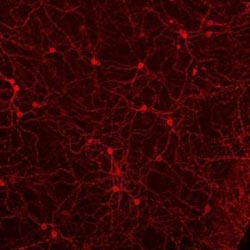Perfect vision but blind
Mammals have two types of light-sensitive organs in the retina. They are cone and rod cells, all needed to receive the image of the surrounding environment. However, researchers at the Salk Institute for Biological Research have found that eliminating the third receptor - the cell that exhibits pigmentation of the pigment called melanopsin determines the intensity of the incident light - causing biological clock blind light, but does not change eyesight.
According to Satchidananda Panda, a doctoral professor in the Regulatory Biology Laboratory and research leader: 'The loss of light receptors in some elderly people has nothing to do with the possibility of complete vision. happens, but instead makes it difficult to sleep at the right time. '
Understanding the working mechanism of melanopsin could one day allow scientists to restart the biological clock with a symptom-reducing drug related to overtime, changes in work plans, changing the length of seasonal days, disorders such as insomnia and depression. Their findings were published on June 11, 2008 in PLoS ONE magazine.
The process of receiving images begins when light quanta enters the eye, hitting one or more of the 125 million light-sensitive neurons in the retina behind the eye. Rod cells use rhodopsin to receive translucent light, while cone cells rely on photosynthesis to distinguish colors. This first and outer cell layer transforms information into electrical signals and then transmits them to the intermediate layer. The cell here in turn sends this signal to the optic nerve. Melanopsin helps us look, other than ordinary opsin rods and cones.

When light activates melanopsin (red), a light-sensing organ in specialized, rare cells located on the retina that sends signals to different areas of the brain, this process allows the body to recognize day or night to adjust accordingly.(Photo: Megumi Hatori, Salk Biological Research Institute)
Panda explains: 'It works like a brightness meter in a camera, but not just the function of setting up a biological clock. Information about light intensity is used to adjust pupil opening or pupil size, regulating melatonin synthesis as well as physical activity '.
Unlike millions of rod cells and image cones, melanopsin is only found in about 2,000 cells, called melanopsin- secreting retinal ganglion cells or mRGCs . Attached to the retina, these sarcastic cells transmit signals directly to the human biological clock, a cluster of cells smaller than half the size of a lead eraser, above the point where the nerve Visual meet.
By this signal, the biological clock synchronizes the daily body rhythm with the sun's rise and fall . It tells the body when it is time to go to bed, when it is hungry, when to wake up and makes us feel unbalanced when going through many time zones.
Blind mice with inactive rod and cone cells can still use mRGCs to regulate the circadian clock, pupil opening and light-dependent activity - called an invisible visual reaction image. Meanwhile, mice without melanopsin are not completely blind.
Mice without melanopsin can compensate for the lack of information about light intensity during development, resulting in messy results. The postdoctoral researcher and lead author Megumi Hatori developed a system that enabled her to effectively inhibit melanopsin secreting cells without affecting the retina.
Using her genetic method, mice 'mRGCs are sensitive to dipthera toxins, she takes advantage of this to eliminate melanopsin secreting cells when mice are 8 weeks old. Hatori said: 'We found that the elimination of melanopsin secreting cells makes the biological clock of mice completely blind, but they can still perform visual activity perfectly. '.
The mammalian time-adjusting system depends on information from melanopsin, a smaller part from rod cells and cones to receive information on light intensity . The experiment by researchers at Salk determined that mRGCs are the combined site, pushing all the information to the brightness of ambient light to the biological clock.
Panda said: 'Because of all the information going through mRGCs, these cells become the sole target for biological clock intervention to treat disorders'. He proceeded to scan the ability of melanopsin to sense the light-sensing properties of small molecules, thereby slowing down or enhancing the process of restarting our biological clock.
- The man is blind because of 'dental implants'
- Camera helps blind people recover their vision
- Technology to support vision
- Blind people make people look respectful
- The film is thinner than the hair, which helps blind people regain their sight
- 'Vision machine' for people with poor vision
- Electronic eyes: add bright hope for blind people
- New breakthroughs help blind people see their eyes
- Electronic eyes bring light to the blind
- Smartphone for the visually impaired
- Blind people have extraordinary memories
- 65% of the blind are women
 Why do potatoes have eyes?
Why do potatoes have eyes? 'Tragedy' the world's largest carnivorous life: Death becomes ... public toilet
'Tragedy' the world's largest carnivorous life: Death becomes ... public toilet Tomatoes were once considered 'poisonous' for 200 years
Tomatoes were once considered 'poisonous' for 200 years Detecting microscopic parasites on human face
Detecting microscopic parasites on human face